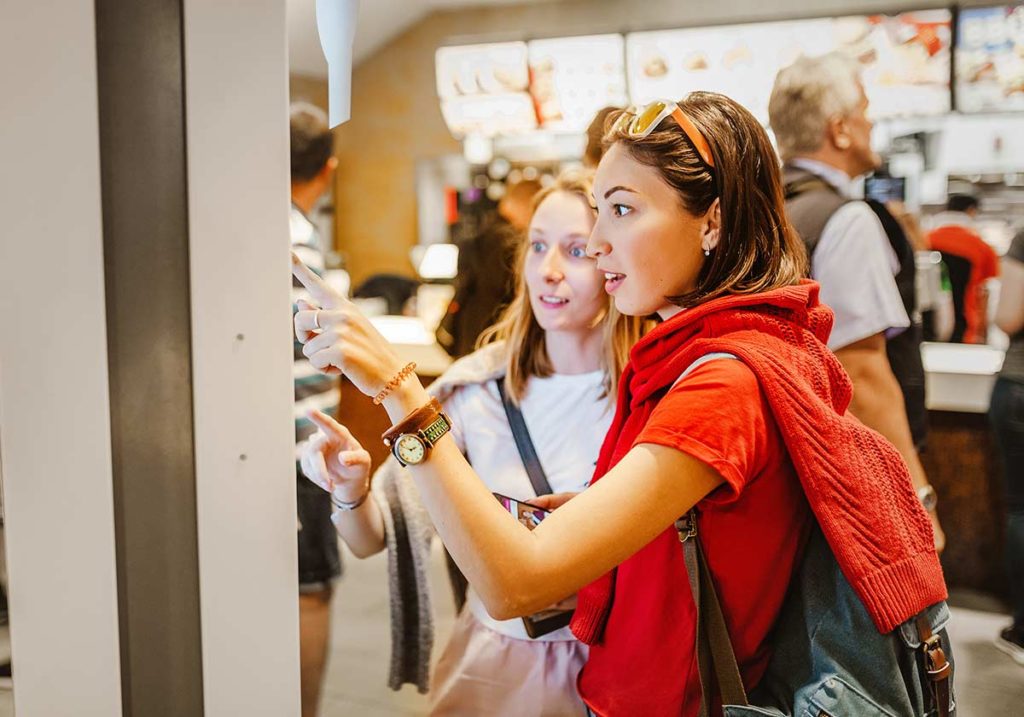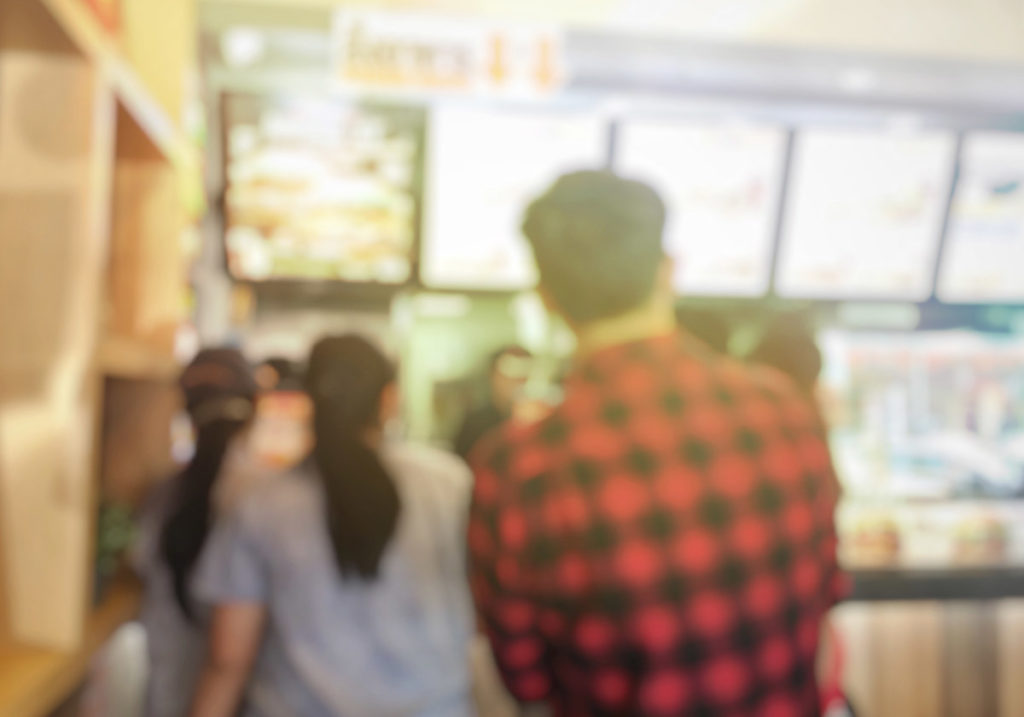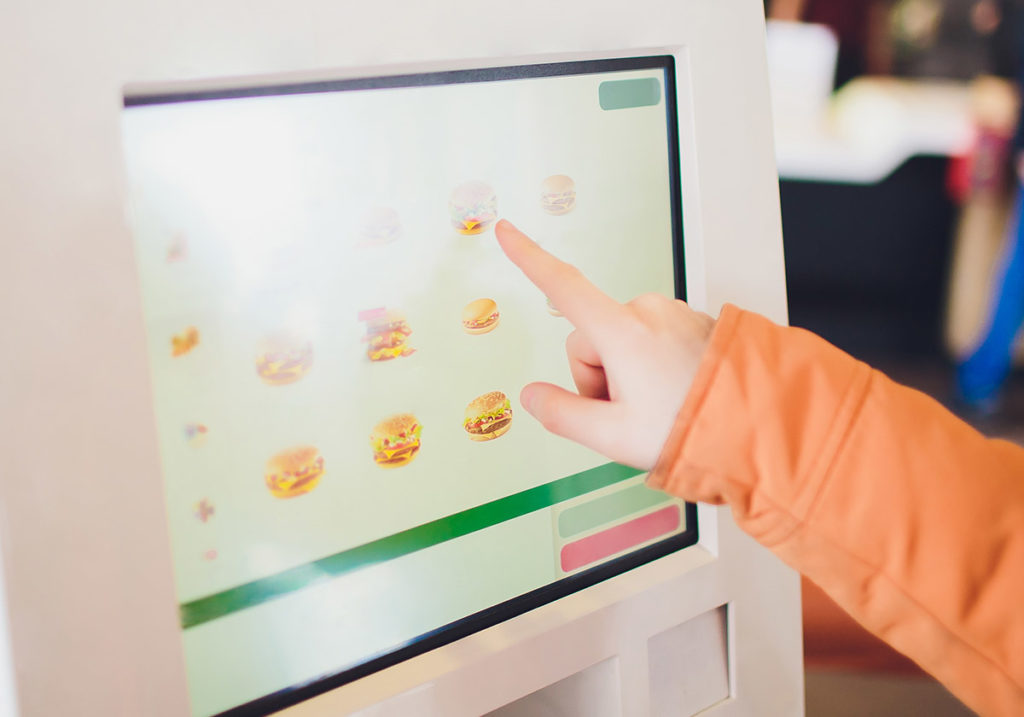Self-service restaurant kiosks
Self-service ordering systems are increasingly common in casual restaurants, as restaurants follow McDonald’s kiosk ordering lead. For the consumer, they represent speed, convenience, and a better experience — less time ordering means more time enjoying a meal. For the restaurateur, restaurant kiosks offer operational efficiency, cost savings, increased guest tickets and loyalty, and more.
The origin of self-service ordering kiosks
Self-service is not a new concept. People have been using self-serve gas pumps, checkout lines, and ATMs for years. Even online shopping is a form of self-serve ordering. McDonald’s introduced the technology to the restaurant industry in 2015, in response to a drop in sales. CaliBurger upped the ante in 2018 with kiosks that use facial recognition technology to engage their loyalty program members.
Self-service ordering technology is especially appealing to younger restaurant patrons, digital natives who embrace technology and often prefer a sales experience with limited human contact and maximum customization options. But studies show that consumers of all ages are willing to try self-service if it is available.
Why a restaurant may want self-service ordering
The pros and cons are felt differently by customers and restaurant owners.
Pros for the consumer
Lower wait times
Convenience is king. Self-serve kiosks reduce wait times. Customers order when they’re ready, or even order before arriving. It’s often possible to have more kiosks than cashiers.
Personalization
Customers can ask for exactly what they want from their order without feeling any hassle or judgement from a human cashier.
Flow of information
More information can be made readily available to the customer on the kiosk menu. It is also closer than a menu board and can be read more easily.
More time to enjoy
Less time ordering means more time enjoying a meal. This is especially important to your business lunch crowd.
Pros for the restaurateur
Self-service ordering technology can enhance your guest experience and boost your bottom line.
Guest experience
With kiosks taking the orders, your employees can focus on improving customer experiences. Kiosks can also function at all hours, and do not make mistakes from being tired or distracted.
Shortened wait times attract patrons who are long on hunger and short on time (or patience). Reducing the wait could, in fact, save a sale. Tillster reports that 57 percent of people surveyed would leave if there were 5 people in line to order. And that percent goes up as the line gets longer. Seventy-five percent of those who might leave would stay if they could skip a long line and order from a kiosk.
And, perhaps most importantly, the integration of mobile loyalty and ordering platforms can engender loyalty with your customers. You can use the data collected by the systems to remember regulars’ orders, optimize customization options, offer special loyalty rewards, and more.
Operational efficiency
You can use data about your customers’ orders to improve restaurant operations. For instance, you’ll know where people struggle in their order, what they tend not to like, and what advertisements work.
And, you can adjust your menu in real time to manage your inventory by promoting something you have in excess or deleting something you’ve run out of.
Bottom line
A self-service ordering system can efficiently upsell and increase tickets size. Access to information and ease of ordering often causes customers to order more. Add easy options to upgrade sides, order a combo, or add a dessert, and people will do so. With bigger orders going through even faster, revenue can increase rapidly.
Because they are programmable, these systems give you a platform to highlight higher-priced or more profitable items more effectively than a printed menu. Kiosks can also be used to advertise deals, promotional specials, or new menu items right as your customer orders.
Like any choice for your business, there are also downsides.
Some customers feel that kiosks replace humans with machines, and this can be viewed negatively. People like to know that human labor is valued. Other people simply like interacting with a person rather than a machine, and feel it is part of the hospitality a restaurant offers. You can mitigate both problems by providing excellent customer service.
For less tech-savvy guests, kiosks can also be confusing. In addition, if the customer has questions, the kiosk may not have all the answers. Machines don’t have the flexibility to come up with a complex solution on the spot. You’ll still need a person on the floor to manage any guest concerns.
There’s also the initial investment you must make as a restaurant owner, as kiosks are expensive. They need to be maintained after installation and any technical difficulties must be dealt with quickly to minimize customer inconvenience. A more complicated system might break down more easily, and malfunctioning kiosks can be a big source of frustration for customers.
Self-service ordering is a step towards a more technologically dominated world, and just one of the ways automation is disrupting the restaurant industry. Whether it is right for your restaurant is something to consider as you move forward. If you suffer from long lines or a slew of cashiers bored with their repetitious jobs, kiosks may be for you.
Whether you choose a self-service ordering technology or not, don’t lose sight of the hospitality that only the human touch can provide.
Rewards Network® does not provide tax, legal, or accounting advice. This material has been prepared for informational purposes only, and is not intended to provide, and should not be relied on for tax, legal, or accounting advice. You should consult your own tax, legal, and accounting advisors before engaging in any transaction.









